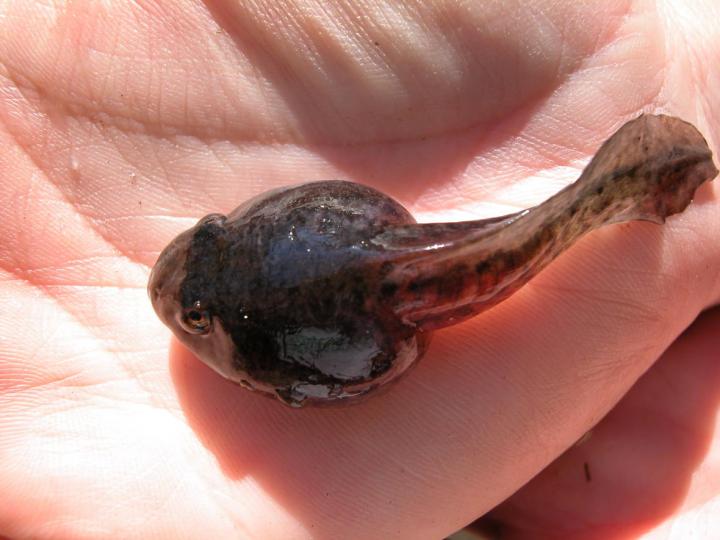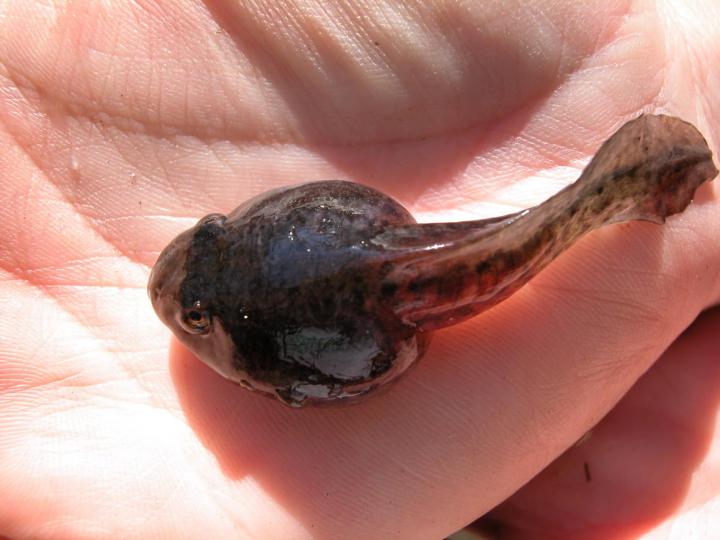
Credit: William Barichivich, USGS
A deadly amphibian disease called severe Perkinsea infections, or SPI, is the cause of many large-scale frog die-offs in the United States, according to a new study by the U.S. Geological Survey.
Frogs and salamanders are currently among the most threatened groups of animals on the planet. The two most common frog diseases, chytridiomycosis and ranavirus infection , are linked to frog population declines worldwide. The new study suggests that that SPI is the third most common infectious disease of frogs.
Scientists with the USGS studied 247 frog die-offs in 43 states from 1999 through 2015. The researchers found that SPI caused 21 of the mass mortalities in 10 states spanning from Alaska to Florida, all involving tadpoles. Up to 95 percent of the tadpole populations died during the SPI mortality events.
"Amphibians such as frogs are valuable because they serve as pest control by eating insects like mosquitos, and they are food for larger predators," said Marcos Isidoro Ayza, a USGS scientist, University of Wisconsin-Madison post-doctoral fellow and the lead author of the study. "They're also exceptional indicators of ecosystem health. Like the proverbial canary in a coal mine, amphibians let us know when something in our environment is going awry."
The SPI die-offs occurred in tadpoles of 11 frog species, including the critically endangered dusky gopherfrog in its only remaining breeding locations in Mississippi. Most of the SPI events occurred in states bordering the Atlantic Ocean and Gulf of Mexico. However, SPI was also detected in Alaska, Oregon and Minnesota.
"Habitat loss, habitat fragmentation and disease are among the factors that contribute to amphibian declines," said Jonathan Sleeman, director of the USGS National Wildlife Health Center. "This study indicates that SPI is an additional disease that can further threaten vulnerable frog populations."
SPI is caused by a tiny one-celled parasitic organism called a protist. The SPI-causing protist, called Perkinsea, is highly resistant to disinfection agents such as common bleach. As a result, it is difficult to prevent the spread of Perkinsea, and SPI is able to reoccur at known locations.
"SPI in frogs may be under-diagnosed because it is not a disease for which they are typically screened," Isidoro Ayza said. "Incorporating routine screening of critical habitats for infected frogs is crucial to help understand the distribution of this destructive disease."
The disease kills tadpoles by causing multi-organ failure, and there is no cure or treatment for SPI at this time. SPI is not known to affect humans or pets.
###
This study was led by the USGS National Wildlife Health Center in collaboration with the USGS Amphibian Research and Monitoring Initiative. For more information about USGS wildlife disease research, please visit the USGS National Wildlife Health Center website.
Media Contact
Marisa Lubeck
[email protected]
303-526-6694
@USGS
http://www.usgs.gov
Original Source
https://www.usgs.gov/news/emerging-disease-further-jeopardizes-north-american-frogs http://dx.doi.org/10.1038/s41598-017-10456-1





